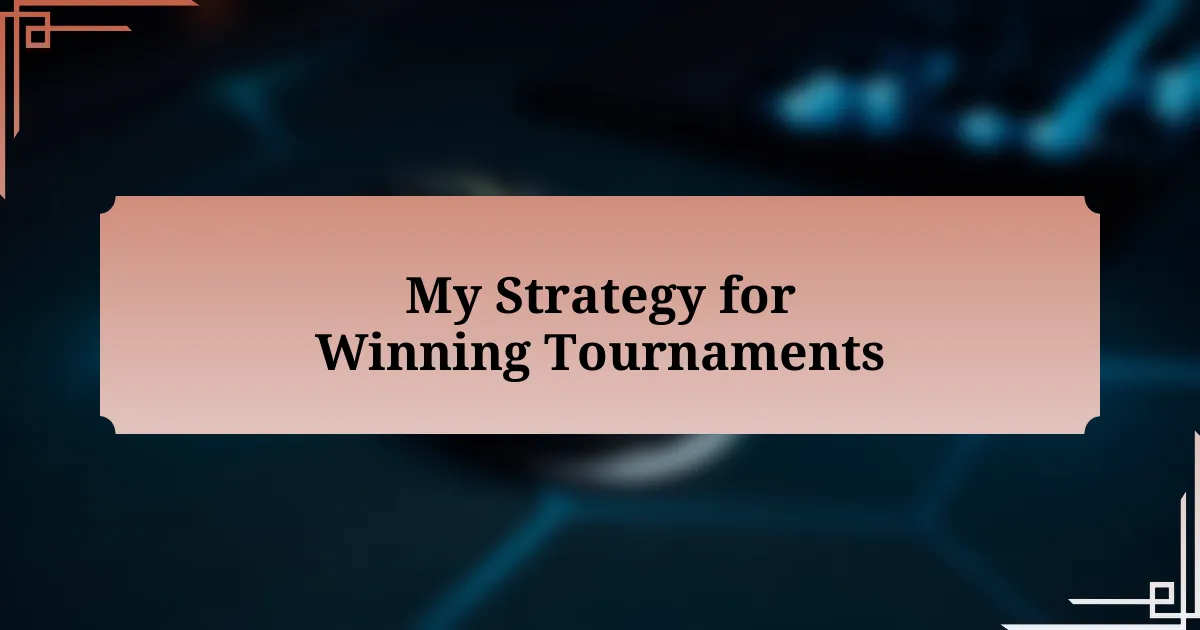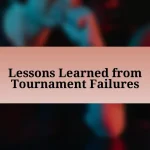Key takeaways:
- Success in eSports tournaments requires not only technical skill but also a strategic understanding of tournament structures and opponent analysis.
- Developing a personal gameplay style is crucial, and it evolves through experimentation, helping players capitalize on their unique strengths.
- Setting intentional, actionable goals enhances performance, allowing players to focus on specific skills and adjust as needed throughout tournaments.
- Emotional management during competitions, such as harnessing adrenaline and fostering team resilience, can significantly impact overall performance.
Author: Evelyn Hartley
Bio: Evelyn Hartley is an award-winning author known for her compelling narratives and richly drawn characters. With a background in psychology and literature, she weaves intricate tales that explore the complexities of human relationships and the intricacies of the human psyche. Her debut novel, “Whispers in the Dark,” was celebrated by critics and readers alike, earning her a dedicated following. Evelyn’s work has been featured in various literary journals and anthologies, and she frequently speaks at writing conferences and workshops. When she’s not writing, she enjoys hiking in the mountains and volunteering at her local animal shelter. She resides in Seattle with her two rescue dogs, Luna and Milo.
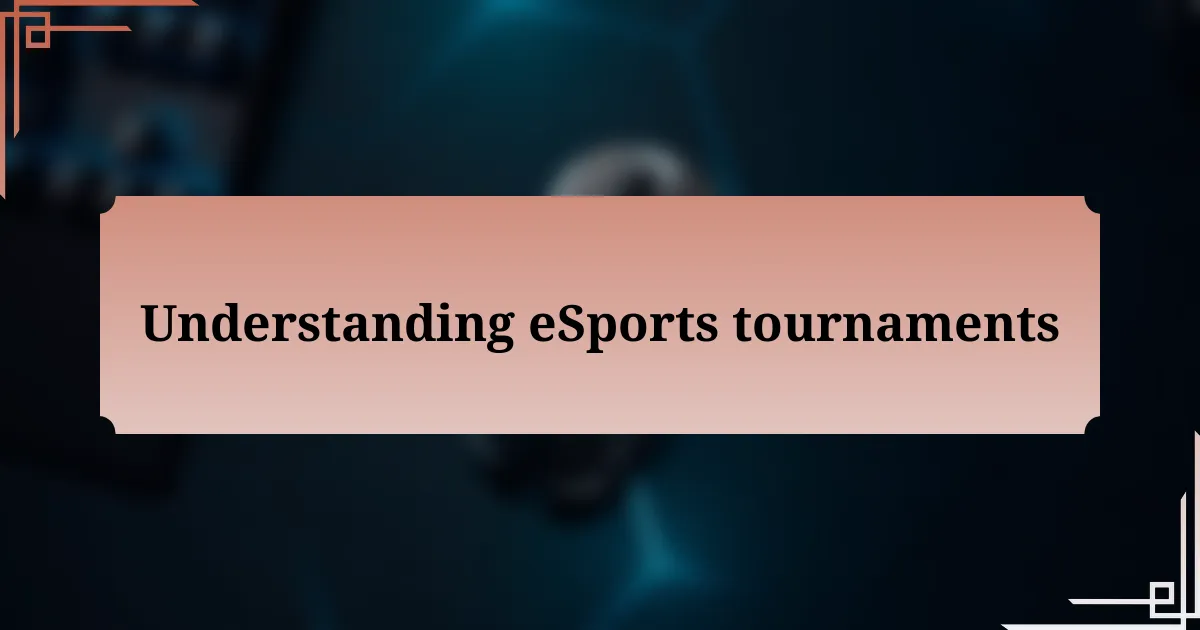
Understanding eSports tournaments
eSports tournaments have evolved into a multi-faceted ecosystem, attracting players and fans from around the globe. I remember my first tournament; the adrenaline rush was palpable as I watched top players battle it out live. This excitement not only stems from the competition itself but also from the camaraderie built among fans and participants alike.
Many people might wonder, what does it take to succeed in these tournaments? It’s not just about technical skill; understanding the structure and rules of each tournament is crucial. For instance, some tournaments operate in a single-elimination format, while others might use a double-elimination setup. I once experienced the frustration of being knocked out early in a single-elimination match, which taught me the importance of playing with strategy and composure right from the start.
Another interesting aspect is the diversity of game genres represented in eSports, from MOBAs to first-person shooters. Each genre comes with its own set of strategies and community dynamics. I recall attending a tournament for a fighting game, where the atmosphere was electric, yet filled with a respectful tension among players waiting for their turn. How can one prepare for such varied environments? It’s about being adaptable and always learning from each experience, whether you win or lose.
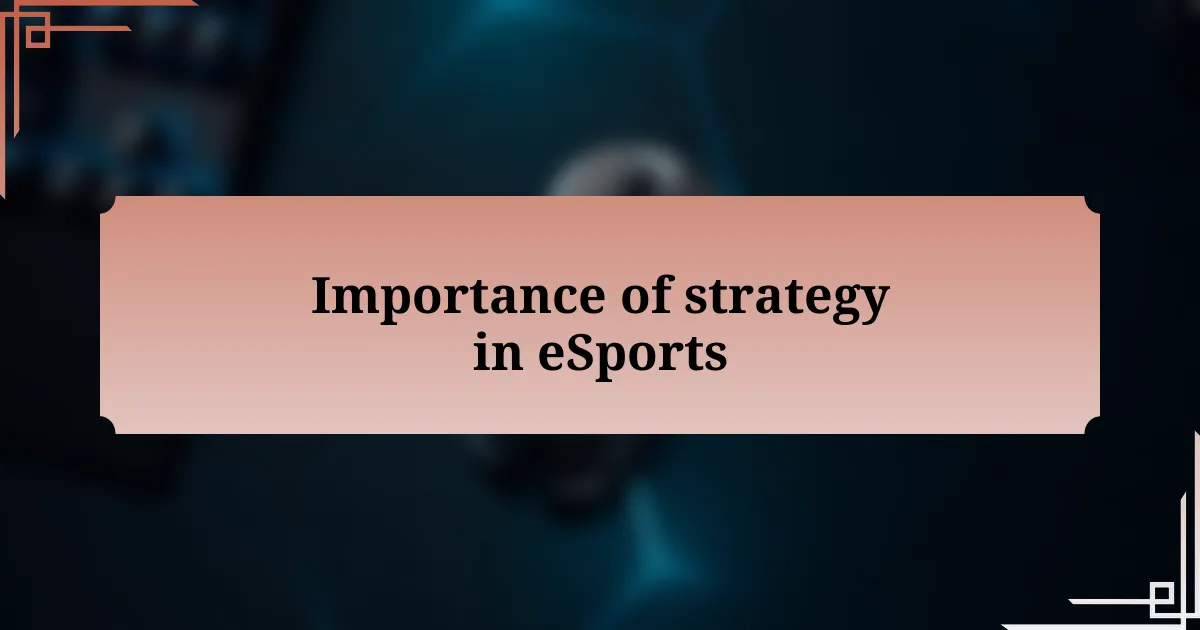
Importance of strategy in eSports
Strategy is the backbone of success in eSports. Without a solid plan, even the most skilled players can find themselves outmatched. I once watched a friend, an incredibly talented player, lose a crucial match simply because he failed to adapt his strategy mid-game. It was a stark reminder that no matter how good you are, thinking critically and adjusting your approach can make all the difference.
When competing in eSports, every decision counts. I remember participating in a tournament where my team had to decide whether to push aggressively or play defensively based on our opponents’ strengths. We chose caution, which ultimately led to our victory. This incident teaches us that it isn’t merely about individual performance; it’s about how well a team can collaborate and execute a shared strategy under pressure.
One might ask, how do you develop a winning strategy? The answer lies in practice and analysis. I kept a detailed journal of my games, noting what worked and what didn’t, which helped me refine my approach over time. Each match becomes a learning experience, emphasizing that strategy evolves with every play and every opponent. In eSports, it’s clear—strategy isn’t just important; it’s everything.
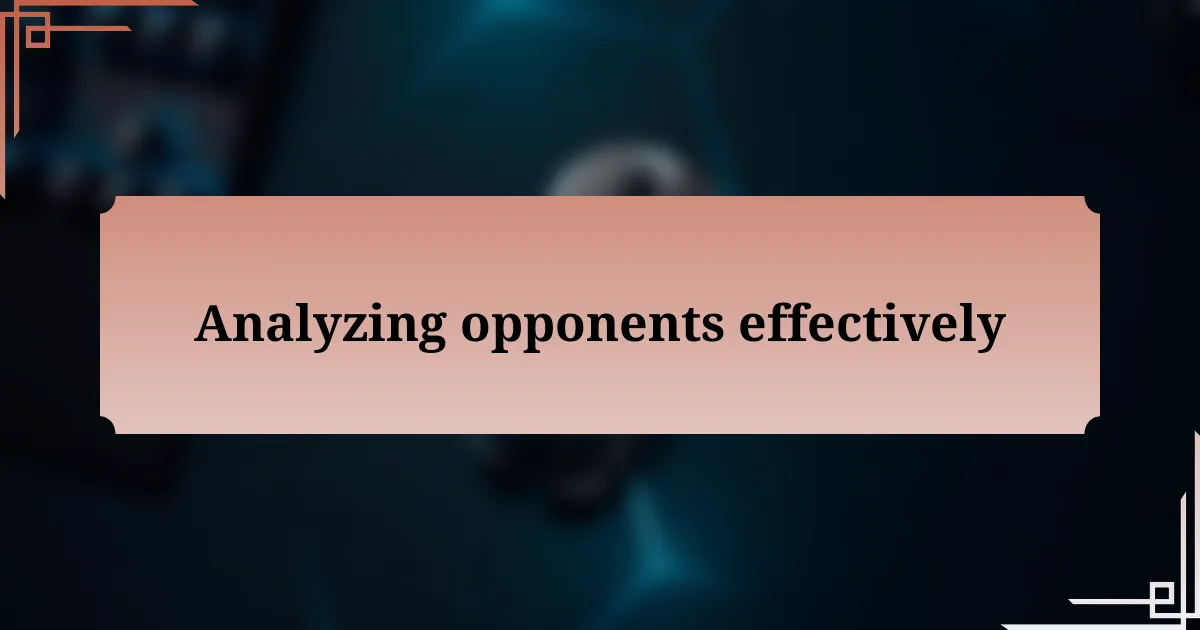
Analyzing opponents effectively
Understanding your opponents is crucial for crafting a winning strategy. I remember a particularly intense match where I took the time to observe an opponent’s playstyle during the early game. I noticed they had a tendency to overcommit during aggressive plays, which I later exploited to turn the game in our favor. It’s these little insights that can shift the balance dramatically.
To analyze opponents effectively, I advocate for breaking down their gameplay patterns. When I faced a rival team known for their sneaky traps, I spent hours dissecting their previous matches. By highlighting their recurring strategies, I could anticipate their moves and counter them before they even unfolded. The emotional satisfaction of outsmarting a competitor through meticulous observation is unparalleled.
Do you ever find yourself overwhelmed by the number of strategies you can encounter? I certainly did. To simplify, I started categorizing opponents based on their styles—defensive, aggressive, or unpredictable. This method allowed me to tailor my game plan better. Each tournament became less about reacting and more about preparation, and I found this proactive approach significantly impacted my performance.
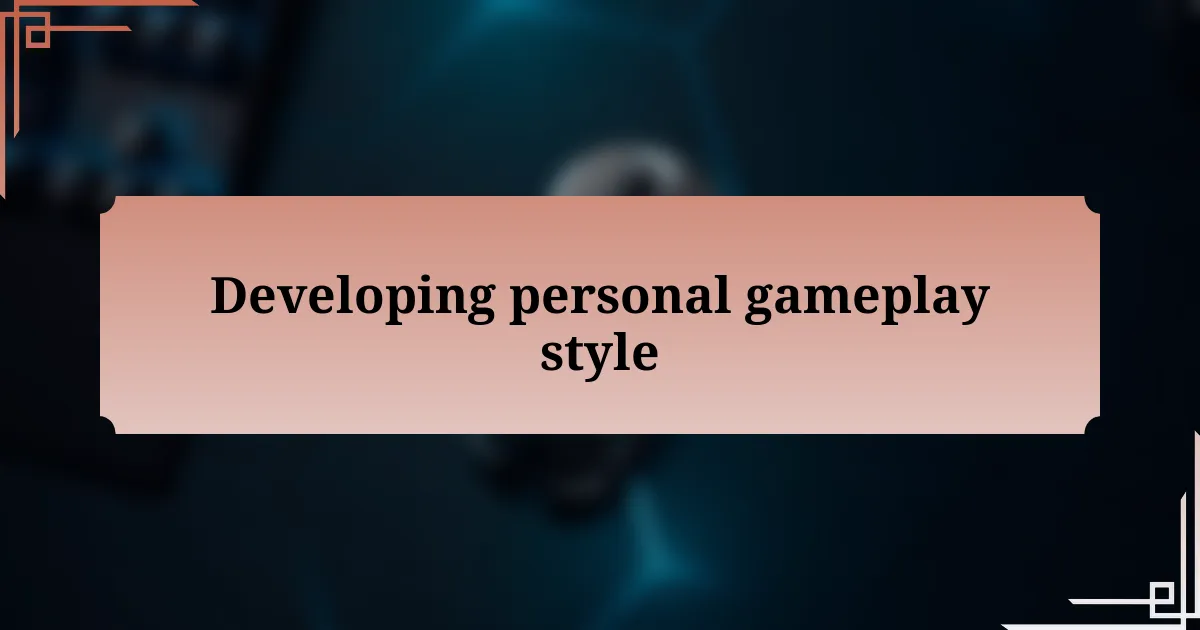
Developing personal gameplay style
Developing a personal gameplay style is a journey that reflects my unique strengths and preferences. Early in my competitive career, I struggled to find my footing until I discovered that playing defensively suited my nature. This revelation transformed my matches; I began to capitalize on my opponents’ mistakes rather than forcing aggressive plays that didn’t align with my instincts. Have you ever felt like you were trying to fit into a mold that simply didn’t resonate? Finding my style was liberating.
As I honed my skills, I realized that personal gameplay style isn’t static; it evolves with experience. I recall a tournament where I started blending a hybrid approach after noticing my effectiveness in both defensive and opportunistic plays. This adaptability became a secret weapon; when opponents thought they had me figured out, I could surprise them. The thrill of outsmarting someone with a well-timed shift in strategy is indescribable. Isn’t it rewarding when you can surprise even yourself?
Experimentation is key in this developmental phase. I often dedicate practice sessions to trying new strategies that feel outside my comfort zone. For instance, one day, I switched up my usual role to explore a more aggressive tactic, and while my initial attempts were clumsy, they taught me invaluable lessons about timing and risk management. Each misstep brought me closer to refining my style. What risks are you willing to take to uncover your true potential? Embracing that uncertainty can lead to personal growth and ultimately, victory in tournaments.
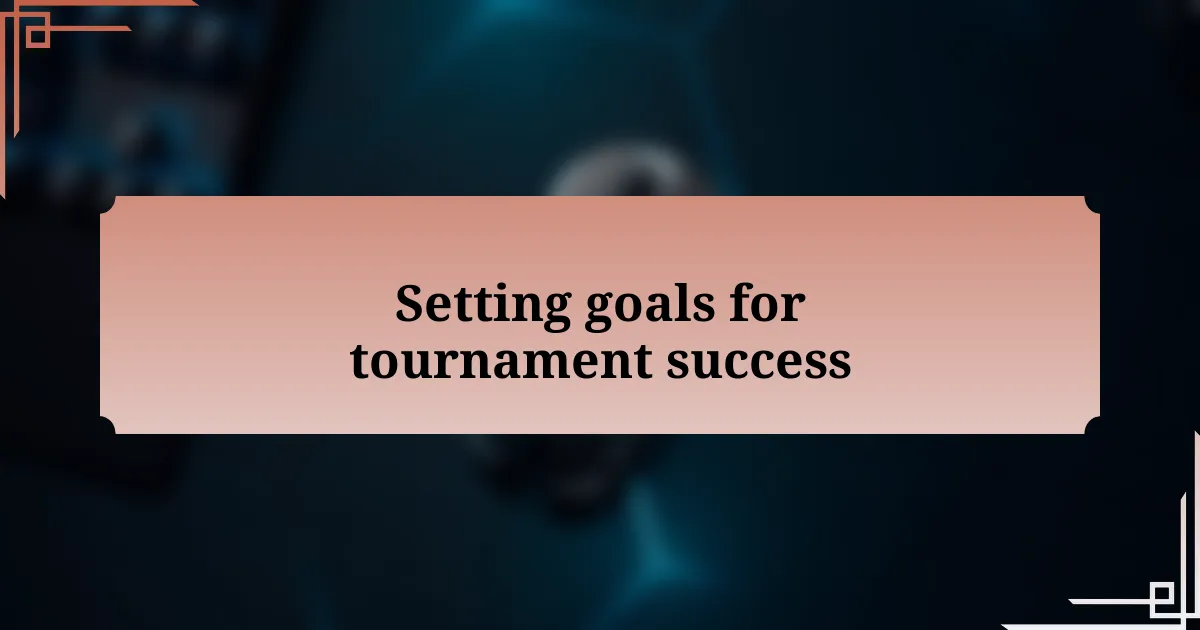
Setting goals for tournament success
Setting goals for tournament success should be intentional and tailored to your capabilities and ambitions. I remember in one tournament, I aimed for the simple goal of improving my communication with teammates, rather than just focusing on winning. That shift allowed us to build synergy, and it opened up new layers of strategy that I hadn’t considered before. Isn’t it fascinating how minor adjustments can lead to major improvements?
When setting your tournament goals, consider breaking them down into achievable, actionable steps. For instance, during the lead-up to a significant event, I focused on mastering three specific skills—timing my abilities, map awareness, and adaptability in high-pressure situations. Each week, I dedicated targeted practice to one area, which kept my growth manageable and motivating. How often do you reflect on your progress in granular ways?
Reflect every few weeks on your goals and adjust them as necessary. I’ve experienced tournaments where I initially aimed too high, only to reassess and set new, more realistic objectives that still challenged me. This process kept me grounded, helping me celebrate smaller victories along the way. Have you ever found yourself setting stretch goals that turned out to be unrealistic? Adapting my goals was crucial for maintaining my enthusiasm and drive throughout the tournament circuit.
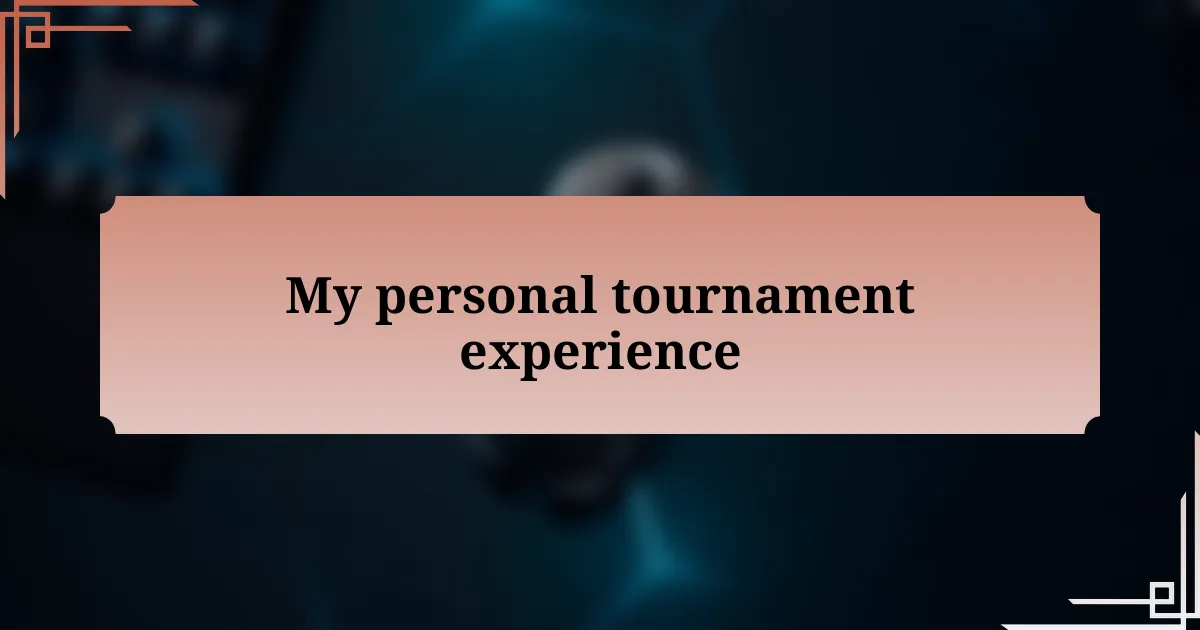
My personal tournament experience
Participating in tournaments has been a rollercoaster of emotions for me. I remember one particular event where I faced a team that was known for their aggressive playstyle. I felt a mix of excitement and nervousness as I entered the arena. That tension transformed into adrenaline once the game started, and it made me realize how vital it is to harness those emotions for peak performance. Have you ever felt that surge of energy just as the competition begins?
In another tournament, I found myself in a situation where my team was trailing behind. Instead of giving in to despair, I leaned on my belief in resilience. I shared a calming mantra with my teammates: “One step at a time.” This simple phrase helped to change our mindset and fostered a sense of unity, ultimately leading us to make a comeback that I still cherish. Do you have any mantras or strategies that help you stay focused in tough situations?
There was also a tournament where unexpected setbacks tested my patience and character. I remember losing a crucial match due to a technical glitch. It was frustrating, but it taught me the importance of adaptability and mental fortitude. Instead of sulking, I used that experience as a learning moment, analyzing what went wrong to ensure I was better prepared next time. What have your challenges during tournaments taught you about your own resilience and ability to adapt?

